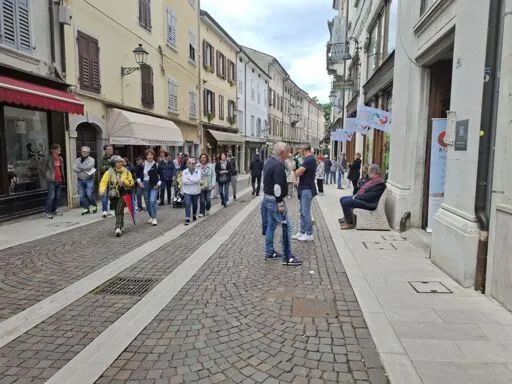The Street Without Borders: “Go Borderless” is more than just a vision on a historic street in Italy’s Gorizia, this year’s European Capital of Culture along with neighboring Nova Gorica in Slovenia
The Street Without Borders: “Go Borderless” is more than just a vision on a historic street in Italy’s Gorizia, this year’s European Capital of Culture along with neighboring Nova Gorica in Slovenia
The Street Without Borders - Transitions

...
In 1947, the Iron Curtain sliced through this corner of Europe. The newly drawn border, established by the Treaty of Paris to accommodate new geopolitical realities in postwar Europe, left most of the urban center of Gorizia in what is now northeastern Italy, and some of its eastern neighborhoods were carved into the newly formed Socialist Federal Republic of Yugoslavia, where Nova Gorica (which means “New Gorizia”) was built, in present-day Slovenia. What was one town became two Gorizias, divided by two ideologies, two languages, and decades of silence.
Via Rastello, once the beating heart of the city, fell into neglect following economic decline and deepening social divisions. A vibrant crossroads of commerce became a quiet street lined with closed shops along its narrow cobblestone course. The street had lost its purpose – and with it its people.
Only in recent years has the street begun to come alive again, as a new generation of artists, makers, and dreamers breathe life back into it. Especially this year, with the European Capital of Culture events underway in both Gorizias, the number of visitors has grown significantly.
...